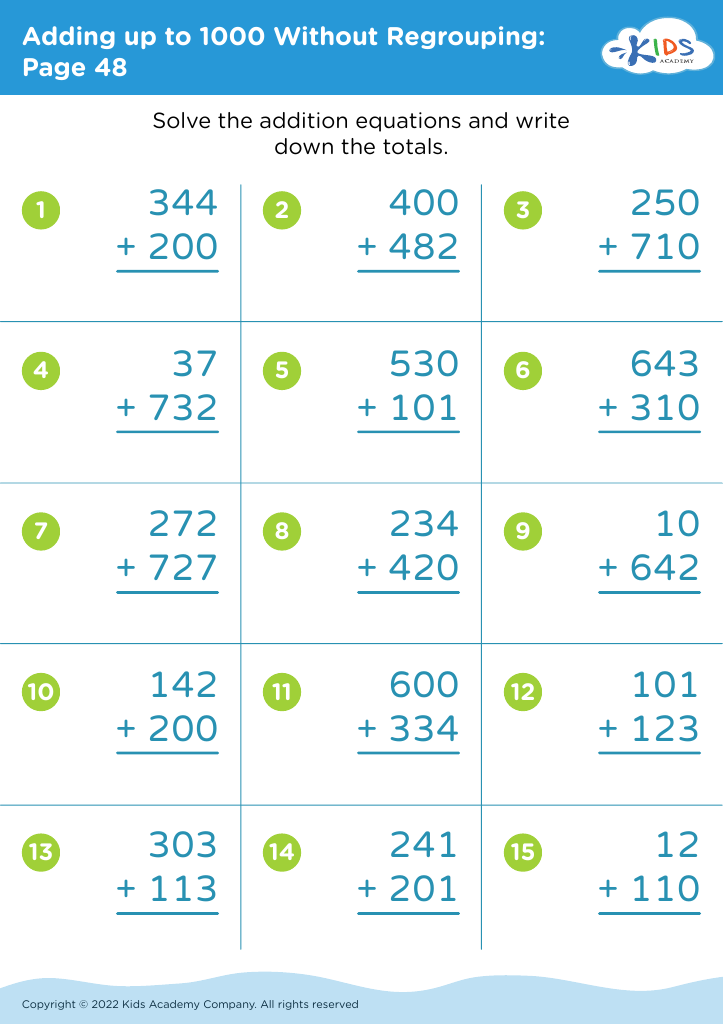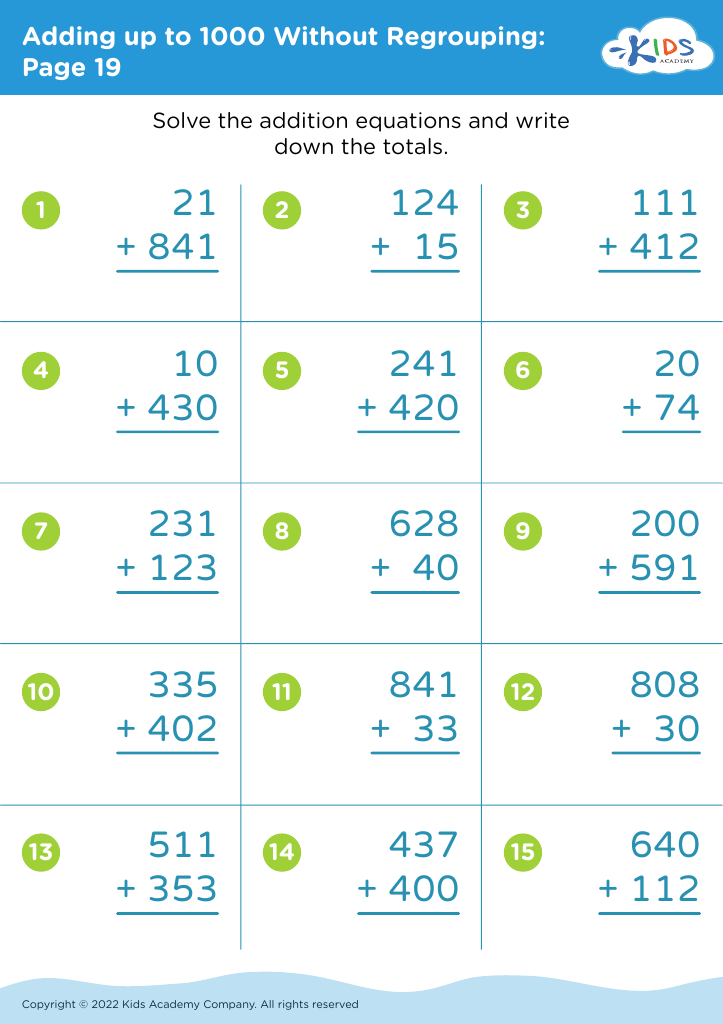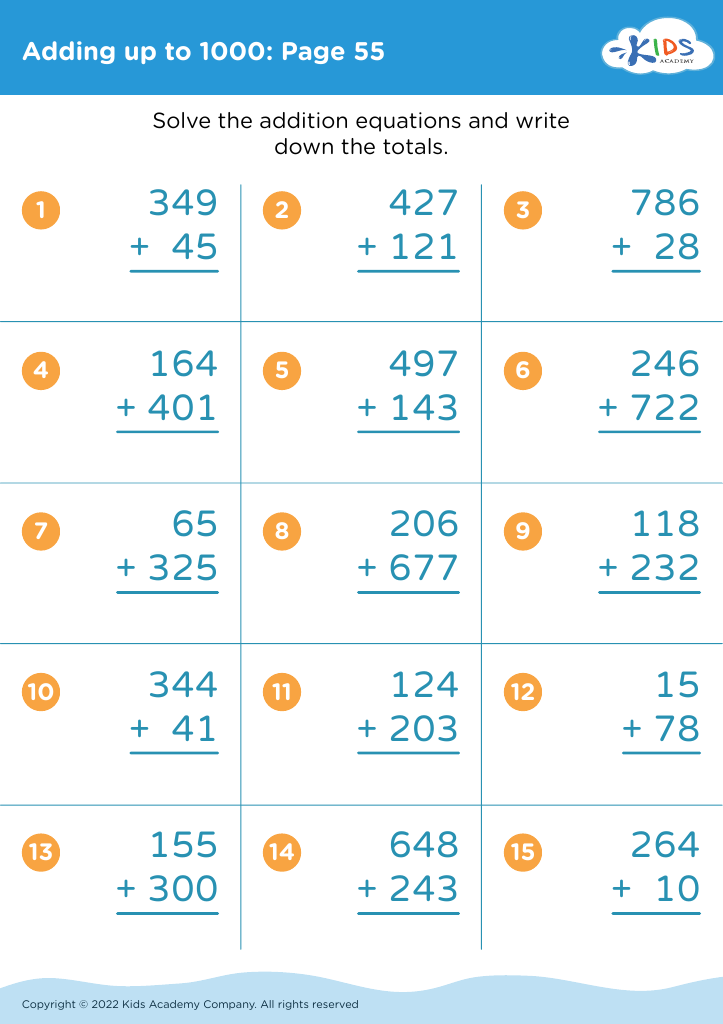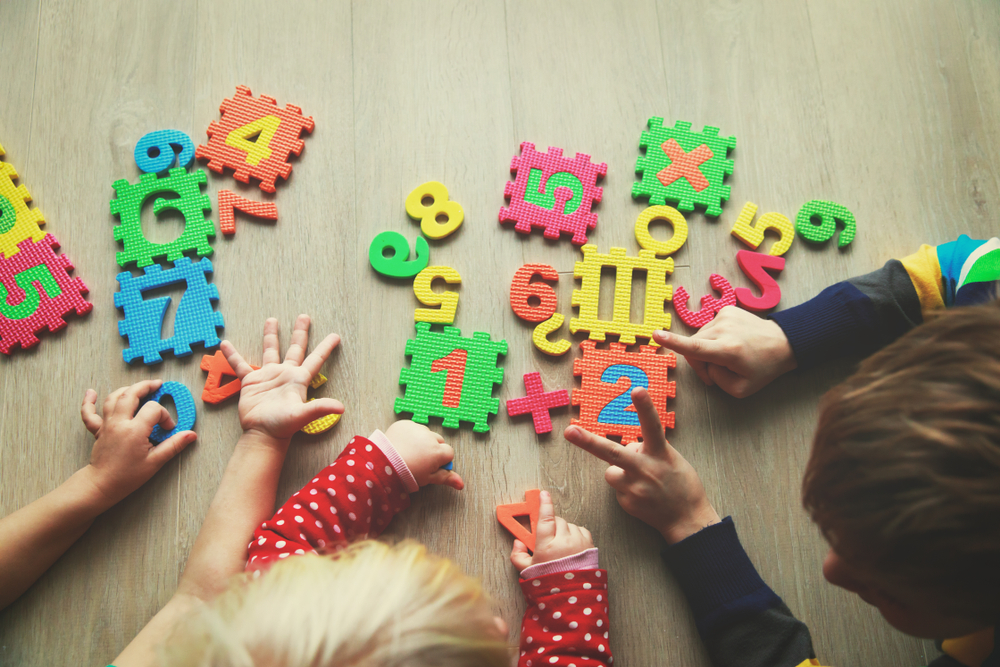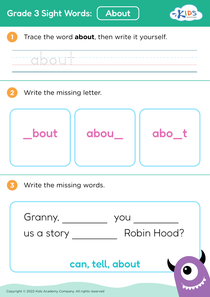Understanding patterns Grade 3 Addition Worksheets
5 filtered results
-
From - To
Enhance your Grade 3 students' math skills with our "Understanding Patterns" Addition Worksheets! These engaging, printable resources help children recognize and utilize patterns in addition problems. By practicing with various exercises, students will develop their ability to identify relationships between numbers, enhancing their problem-solving skills and building a solid mathematical foundation. Our worksheets feature vibrant illustrations and diverse activities that cater to different learning styles, making math both fun and interactive. Perfect for classroom use or at-home practice, these worksheets are designed to foster critical thinking and encourage students to explore mathematical concepts beyond basic computation. Empower your young learners today!
Understanding patterns in Grade 3 addition is crucial for students' mathematical development, and parents and teachers should prioritize this skill for several reasons. First, recognizing and analyzing patterns helps students build a strong foundation in mathematics. Patterns are the building blocks of more complex mathematical concepts, including multiplication, division, and algebra, which are introduced in later grades. When students grasp addition patterns, like the commutative and associative properties, they develop a more profound understanding of numbers and relationships.
Furthermore, pattern recognition enhances problem-solving skills. Students learn to break down complex problems into manageable parts, making it easier to tackle more challenging mathematical tasks. This skill not only supports their current learning but also prepares them for future academic success.
In addition, fostering an appreciation for patterns can engage students' curiosity and motivate them to explore math further. Connective learning strengthens cognitive abilities and encourages critical thinking, leading to improved confidence.
Ultimately, by focusing on addition patterns, parents and teachers can cultivate a rich learning environment that empowers students to become competent, enthusiastic mathematicians, ready to face more advanced challenges in their educational journeys.
